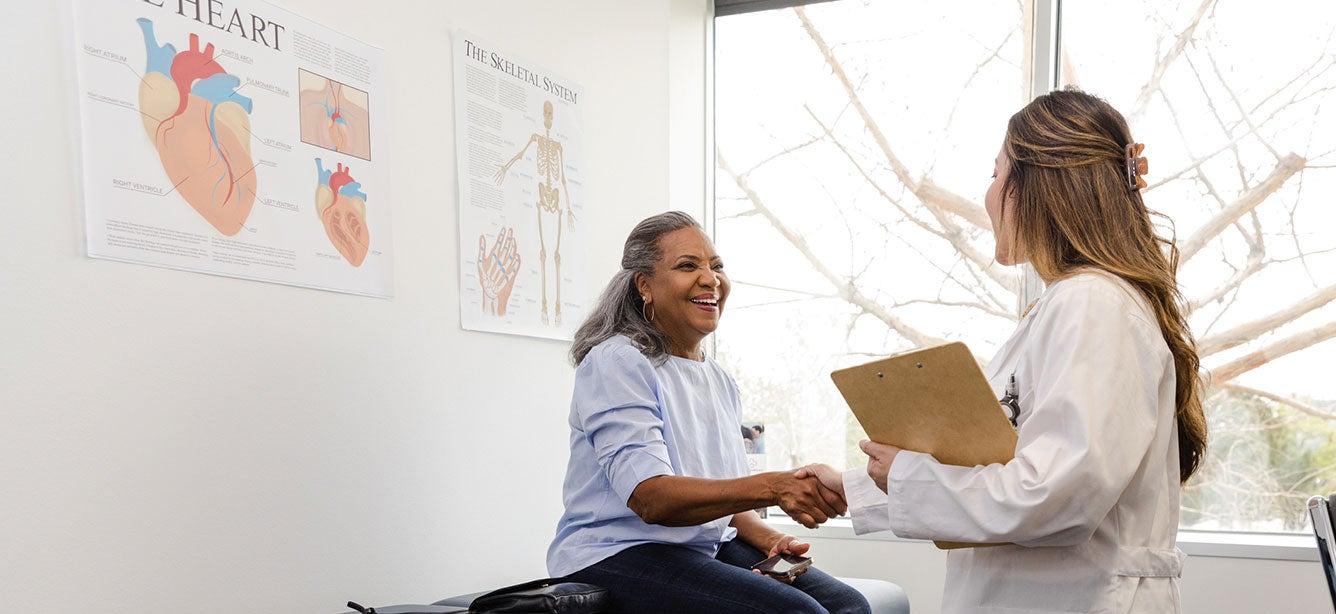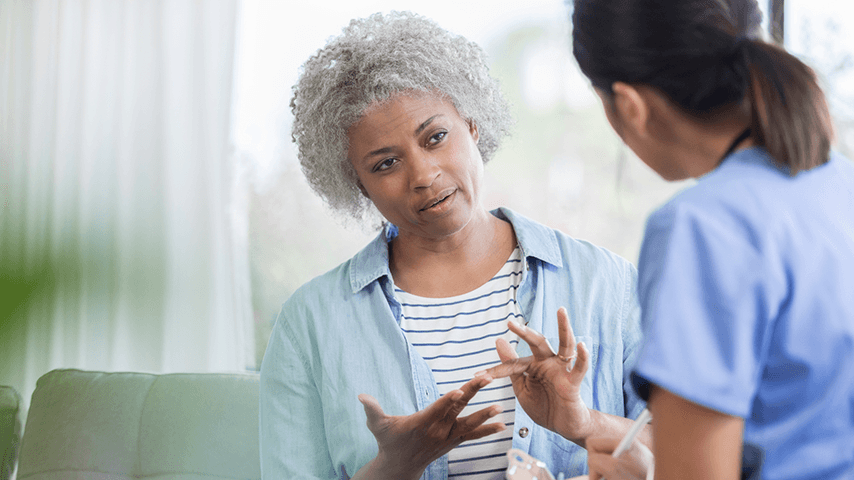Understanding Older Adults with Vision Loss and How to Help
6 min read

The adults you support who live with blindness and low vision can enjoy a vastly improved quality of life through targeted support and referrals. And new insight into how many people are living with low vision, their likelihood to be living with chronic conditions, their overall quality of life, can help you tailor your outreach and support.
Big Data Reports give key insights about adults with vision loss
VisionServe Alliance and the Aging and Vision Loss National Coalition (AVLNC), in partnership with the Ohio State University College of Optometry, have developed reports on the rate of blindness and low vision, and critical factors such as chronic conditions, disability measures, health-related quality of life, as well as demographic and geographic variance.
Information provided at the national, state, and county levels gives important insights about the adults you support. Data sets for the project include the CDC’s Behavioral Risk Factor Surveillance System (BRFSS) and Census American Community Survey (ACS), which provides five-year aggregated county-level data. Reports include:
How common is blindness and low vision?
When asked “Are you blind or do you have serious difficulty seeing even when wearing glasses? about 7.3% of Americans 65+ answered yes (7.5% of women 7% men). Reported vision loss also varies by race and ethnicity, with 10.5% of Black, non-Hispanic adults reporting significant vision loss, 13.9% of Hispanics, and 14.2% of Native Americans (compared to 6.1% of white, non-Hispanic adults).
Not surprisingly, significant vision loss is reported more often as Americans age, being reported by 6.3% at age 65-74, 7.4% at 75-79, and 9.8% of adults 80+.
Vision loss is also not evenly distributed geographically, and of a cross section of states examined, the prevalence of blindness and low vision among adults 65+ ranges from approximately 6% to over 12%.
Education and income
According to the data, adults 65+ living with blindness and low vision have dramatically reduced levels of education and lower income as compared to adults without blindness and low vision.
Over one-quarter of older people with blindness and low vision (28.7%) have not graduated from high school, and 37% have annual incomes below $20,000. These factors can negatively impact one’s ability to access a broad range of services and support.
Chronic conditions
Adults 65+ with blindness and low vision report dramatically higher prevalence of chronic conditions as compared to adults 65+ without vision loss—in some case more than double the prevalence. For example:
- Hearing Impairment—33.3% of adults 65+ with vision loss versus 13.8% of adults of the same age without vision loss
- Depression—26.9% of adults 65+ with vision loss versus 13.9% of adults of the same age without vision loss
- Diabetes—36.4% of adults 65+ with vision loss versus 22.1% of adults of the same age without vision loss
- Heart disease—18.2% of adults 65+ with vision loss versus 10.1% of adults of the same age without vision loss
- Stroke—16.9% of adults 65+ with vision loss versus 7.3% of adults of the same age without vision loss
As with overall vision loss prevalence, these chronic conditions also significantly vary state-to-state and county-by-county. Download your free copy of the National Big Data Project Report for Adults 65+, and any state reports available (additional state reports continue to be published).
Overall health, disability, and quality of life measures
Vision loss can dramatically impact overall health, quality of lif,e and disability. The BRFSS and ACS surveys include a range of questions that address these areas, with just a few statistics provided below:
- Physical health
- 51% of adults 65+ with blindness and low vision, compared to 23% without vision loss, report fair or poor health
- 36% of older people with blindness and low vison report 14 or more days of poor physical health in the past 30 days, compared to 16% of those without blindness and low vision
- Mental health
- 18% of people with blindness and low vision report 14 or more days of poor mental health, compared to 7% of those without blindness and low vision.
- Disability
- This disparity in quality of life is repeated in activity limitation days, where 34% of people with blindness and low vision report 14 or more days of activity limitation (in the past 30 days) compared to 19% among those without vision loss.
Your clients with blindness or low vision often face additional challenges, and various referrals can support your clients with vision loss in many ways.
Medical, mental health, and other referrals
Given the significant incidence of chronic health conditions, rates of depression, and disability associated with vision loss, you can provide enhanced support or referrals to help address the broad range of challenges these clients may face.
Download your free National and available state reports for Adults 65+. Big Data Project national and state reports are also being published highlighting data for adults 18-64, including prevalence, chronic conditions, disability measures, across eight employment categories.
Vision rehabilitation
Vision rehabilitation programs and training can assist adults with blindness and low vision in virtually every aspect of their lives. Tragically, less than 5% of people who could benefit from these services are currently receiving them. You can help change that!
Vision rehabilitation includes:
- Independent Living Skills to help adults remain safe in their home, perform cooking, cleaning and other daily activities, and engage in social interactions and hobbies, which reduces social isolation, anxiety, and depression
- Orientation & Mobility helps adults travel safety throughout the community, improving their ability to travel for medical visits - increasing medical compliance
- Access technology and Assistive Aids & Devices help clients remain connected and more easily perform a broad range of activities impacted by sight loss, including the completion of medical and other intake forms, the proper and safe use of prescription medication, and more.
Your local Vision Rehabilitation agency can accomplish an assessment to confirm the optimum combination of programs and training for a client. Visit Time to Be Bold to locate local vision rehabilitation services and other vital resources. Call the APH hotline to receive support and practical coping strategies for everyday tasks, join remote discussion groups, and access free online resources at the APH Connect Center and VisionAware.
Learn more about vision rehabilitation:
- The Reality of Aging and Vision Loss in America
- Identifying Undiagnosed Vision Loss in Older Adults
- Common Age-Related Eye Diseases: What to Know and What You Can Do
- Vision Rehabilitation Can Complete the Continuum of Care
- How to Connect Older Adults to Life-Changing Vision Rehabilitation Services
- How Referring Older Adults to Vision Rehabilitation Can Strengthen Their Medical Care
- Helping People with Blindness and Vision Loss Continue to Participate in Everyday Activities
- How to Meet the Growing Challenge of Older Americans with Vision Loss
This project was supported, in part by grant number 90CSSG0048 and 90FPSG0051 from the U.S. Administration for Community Living, Department of Health and Human Services, Washington, D.C. 20201. Grantees undertaking projects under government sponsorship are encouraged to express freely their findings and conclusions. Points of view or opinions do not, therefore, necessarily represent official Administration for Community Living policy



